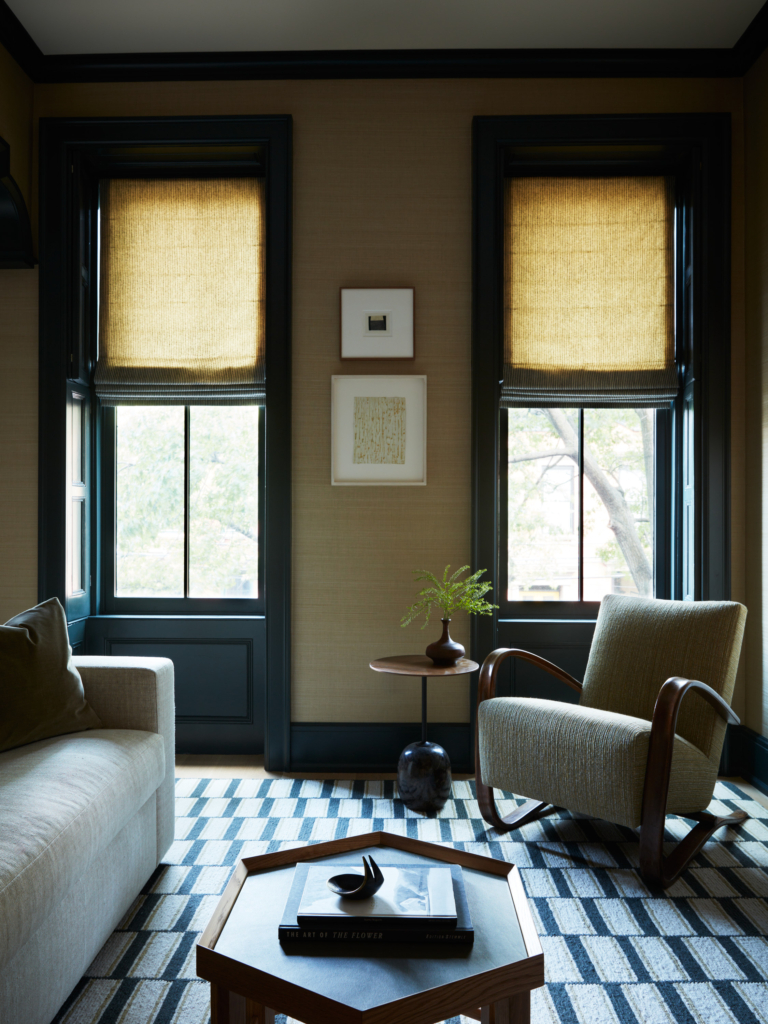
Wisteria by Carter Williamson Architects
Heritage Federation hallmarks, an increased connection to nature and a desire to marry old with new were the defining traits of this Sydney home’s reasoned transformation.
Partially concealed by a dense row of brush box, which lines a quaint Sydney streetscape, Wisteria is first encountered as a Federation Queen Anne bungalow wholly befitting its name. In searching for the much-loved plant’s purple plumes, its absence is noted alongside the recognition of two ‘ears’ that unobtrusively extend outwards from behind the red brick facade beneath a traditional gabled roof. Barely visible from the street, these covert addendums are the first visual cue to a recent intervention by Carter Williamson Architects.
There is a narrative that accompanies the preservation of heritage homes. One that is complex and all too common, a sensitive storyline underpinned by a unified desire to celebrate the pattern of development over time yet often interrupted by how that may manifest. During its planning, Carter Williamson Architects’ proposed design for Wisteria’s evolution generated objections from those worried it would run down the heritage value of the Summer Hill area. Yet the clarity of the design, its sympathetic integration within the home’s existing historic gestures and its capacity to considerately evolve them for contemporary living ultimately secured council support.
From the street, Wisteria is emblematic of the Federation style with fretwork, lead-light windows, a deep-set verandah with patterned patio tiling and terracotta ridge cappings crowning a steeply pitched roof. Inside, the front formal bedrooms have been retained and picture rails and patterned Art Nouveau air vents have been restored along with the enfilade arrangement of rooms falling off a central hallway. From the moment of arrival though, sightlines are drawn instinctively towards a light-drenched voluminous addition that unfolds like a long-held breath at the hallway’s end.
“There used to be a late-1980s-early-90s brick extension at the same floor level,” says principal architect Shaun Carter. “But by the time you got to the backyard, it was half a storey off the ground. Our overarching strategy was to put in a new pavilion to the rear in its place, separated from the old to create beautiful courtyards. We then dropped it down to connect to the ground plane but needed a second storey to pick up the rest of the program, which allowed us to do the real Carter Williamson signatures, like voids and generosity.”
Defining the transition between old and new, the light wells become breathing spaces, coaxing a subtle recalibration and heralding the point when a shift is cultivated in both atmosphere and aesthetics. The void carved out between the two volumes has been designed with meticulous intention to become more than circulation. It acts as a transitional point, navigational tool and opportunity for orientation. From it, you can see the front door and an arched threshold, deliberate devices that give cues as to the gentle introduction of interventions. You are held there momentarily before stepping downstairs into a lantern-like light box.
From the outset, the clients displayed an incredible architectural literacy and a determination for a “Carter Williamson house”. It steered the project into a cathartic place, revealing a definition of what exactly a building by the firm is – one that elicits “warmth, joy and generosity”.
Opportunistic design details pepper every space, an endorsement of the firm’s intuitive capacity to design in context and forge equilibrium between form and function.
There were also considerable budget constraints at the project’s onset, so deliberate material choices and a rigorous approach became vehicles of control. “There was the overlay of a grid from the get-go as a way of controlling size and outcome,” says Shaun. “Through discipline comes a focus on what you really need to concentrate on. We needed to get enough room as was necessary but create confines and defines to keep to the budget.” A rectilinear arrangement emerged, partially inspired by early conversations about Japanese houses, courtyards, sliding doors and timber compositions, serendipitously cultivating a sense of precision and refinement that is elevated by soaring volumes, rich timber tones and biophilic layers.
Navigating down from the heritage volume, the addition opens to the embrace of the garden where a striking jacaranda forms a backdrop for other greenery. Plants hang like a raised curtain in the heights of a full ceiling void, encircling a living room with an open-plan dining zone and kitchen. A laundry, pantry and two studies bookend the space and are slightly partitioned off from it to keep the notion of utility out of areas devoted to leisure, relaxation and togetherness – these are the ‘ears’ just visible from the street. Opportunistic design details pepper every space, an endorsement of the firm’s intuitive capacity to design in context and forge equilibrium between form and function.
“When you look through the building [from the back garden], there are two really strong portal grids,” says Shaun. “On the lantern courtyard side are blades that create structure and depth. On the outside, the vertical operable blades continue the proportional, compositional exercise. Over the windows, they play with the strong vertical structural elements to give the window seats and desk spaces on the inside. If you subvert this rule, you create sliding or operable doors.”
Wisteria is defined by a restrained palette and a reductive dedication to a core set of materials – timber, concrete, stone, plasterboard and glazing – which continue from exterior to interior. In addressing its architectural outcome in a way that maintains focus on context, client and atmosphere, Carter Williamson Architects has shaped a home distinguished by the consequences of that commitment. A commitment that restores and retains its heritage expressions, fostering quiet junctures between then and now so that they become an unexpectedly perfect prelude to the soaring volumes and light-drenched appeal that marks its new addition.
Architecture and interior design by Carter Williamson Architects. Build by Andrew Burton Construction. Landscape by Hugh Burnett. Engineering by Rebal Engineering. Joinery by Sublime Custom Cabinetry.
































